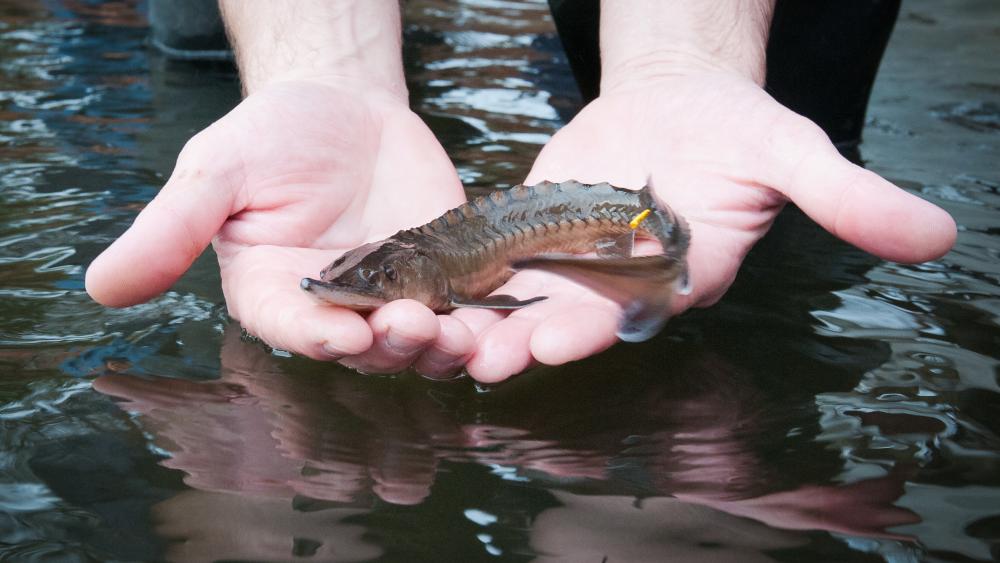It is a milestone in European species conservation: Today, one hundred young European sturgeon (Acipenser sturio) were released into the Elbe River near Magdeburg as part of a long-term reintroduction programme and in the presence of the German Environment Minister Steffi Lemke.

A young European sturgeon is released into the wild. The marking is used to identify the fish if it is caught later. Since the sturgeon is strictly protected, it must be set free after the catch. | Photo: Marco Prosch
It is the first sturgeon offspring for the river since 2015. This action is an important step towards re-establishing a self-sustaining sturgeon population in one of Germany's largest river systems.
The reintroduction programme was initiated in the 1990s and dates back to German reunification, when the Elbe became a river under common management. Inspired by salmon and sea trout reintroduction projects, research institutions, fisheries administrations and practitioners decided to launch an ambitious and effective programme to protect and restore sturgeon stocks in Germany. In order to coordinate the efforts, which had been scattered until then, the Society for the Conservation of the Sturgeon (GRS) was founded in 1994, which celebrates its 30th anniversary today. From the outset, the work was accompanied and partially supported by several research and development projects of the Federal Agency for Nature Conservation (BfN), funded from the Federal Ministry for the Environment (BMUV).
Dr Jörn Geßner, scientist at the Leibniz Institute of Freshwater Ecology and Inland Fisheries (IGB) in Berlin and coordinator of the reintroduction programme:
"Today's release of the young sturgeons is a strong signal that our efforts to protect this fascinating species are paying off. As the parent fish that hatched between 2007 and 2014 are now reaching sexual maturity, we can finally carry out restocking measures again and hope that this will lead to the establishment of a stable population in the Elbe in the long term. The European sturgeon is an important ecological indicator of the state of our river systems. It shows where the deficits in the management of our flowing waters lie and how important comprehensive protection measures are for the entire fish community".
Long-standing cooperation and international partnerships for sturgeon offspring
The juvenile European sturgeon released today by Federal Environment Minister Steffi Lemke originate from the French broodstock reared at IGB in Berlin. Since 1996, German and French research institutes have been working closely together to establish a parental stock as a basis for reintroduction.
Between 2007 and 2015, 19,600 juvenile sturgeon had already been released into the Elbe, which also came from French breeding programmes. However, after the collapse of the French broodstock population in 2014, the reintroduction had to be interrupted. Now that the first offspring have reached spawning age, stocking can be resumed.
Challenges and the role of the sturgeon as a flagship species
Despite the positive developments, the challenges remain considerable because sturgeon are impressive migratory fish that spend most of their lives in the sea but return to their home river to spawn. The connectivity of the river systems and their natural dynamics are just as important as the protection of marine areas to ensure the survival of this migratory fish species. Of the 20 returnees that have been documented in the Elbe system since 2020, more than two-thirds died from injuries or suffocated in the summer low oxygen conditions below the Port of Hamburg - before they could even reproduce. Another problem is the insufficient passability of the Elbe system and its major tributaries.
The recently adopted EU Nature Restoration Law provides a powerful instrument to prevent, halt and reverse the loss and degradation of ecosystems, and can also play an important role in the reintroduction of the sturgeon.






